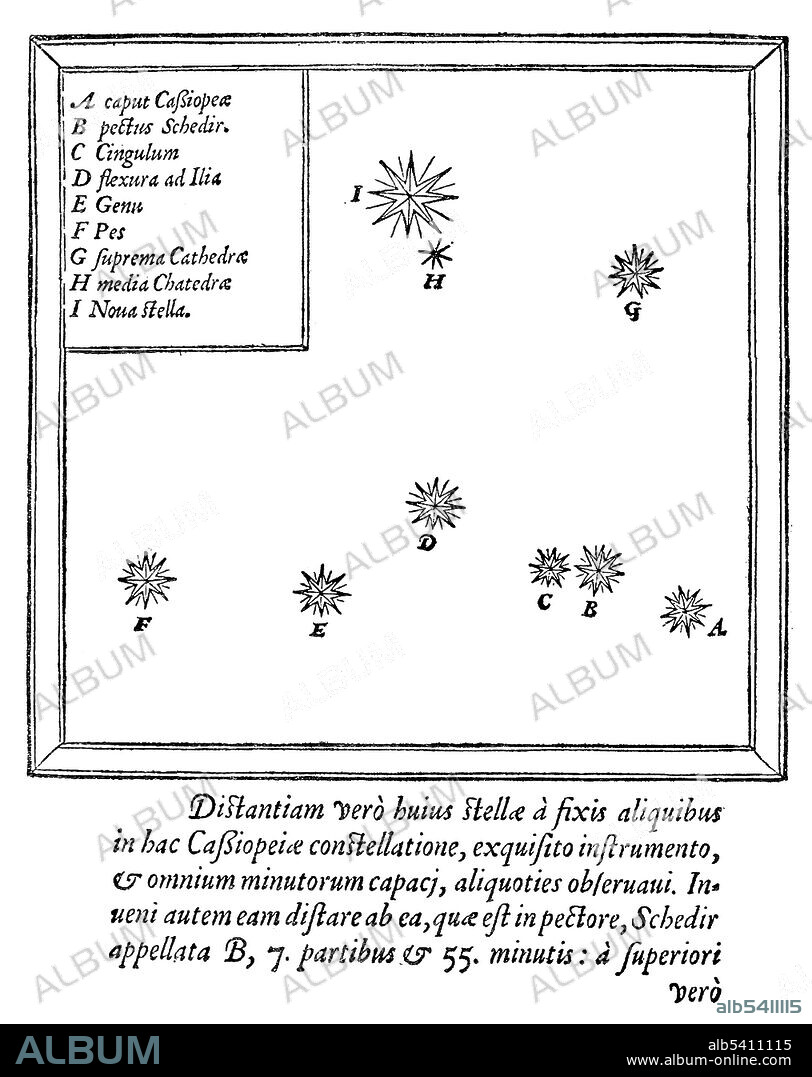alb5411115
Tycho Brahe, De nova stella, Supernova of 1572

|
Ajouter à une autre Lightbox |
|
Ajouter à une autre Lightbox |



Avez-vous déjà un compte? S'identifier
Vous n'avez pas de compte ? S'inscrire
Acheter cette image.
Sélectionnez l'usage:

Titre:
Tycho Brahe, De nova stella, Supernova of 1572
Légende:
Voir la traduction automatique
Star map of the constellation Cassiopeia showing the position of the supernova of 1572; from Tycho Brahe's De nova stella. The supernova of 1572 is often called Tycho's supernova, because of his extensive work De nova et nullius aevi memoria prius visa stella (Concerning the Star, new and never before seen in the life or memory of anyone, published in 1573), a work containing both his own observations and the analysis of sightings from many other observers. Tycho Brahe (December 14, 1546 - October 24, 1601) was a Danish astronomer and alchemist. He was the last of the major naked eye astronomers, working without telescopes for his observations. Tycho is credited with the most accurate astronomical observations of his time, and the data was used by his assistant, Johannes Kepler, to derive the laws of planetary motion. Due to a dueling injury at university, he always wore a metal nose prosthetic. In mid October of 1601 he contracted a bladder or kidney ailment after attending a banquet and died eleven days later at the age of 54.
Crédit:
Album / Science Source
Autorisations:
Modèle: Non - Propriété: Non
Questions sur les droits?
Questions sur les droits?
Taille de l'image:
3330 x 4200 px | 40.0 MB
Taille d'impression:
28.2 x 35.6 cm | 11.1 x 14.0 in (300 dpi)
Mots clés:
 Pinterest
Pinterest Twitter
Twitter Facebook
Facebook Copier le lien
Copier le lien Email
Email
